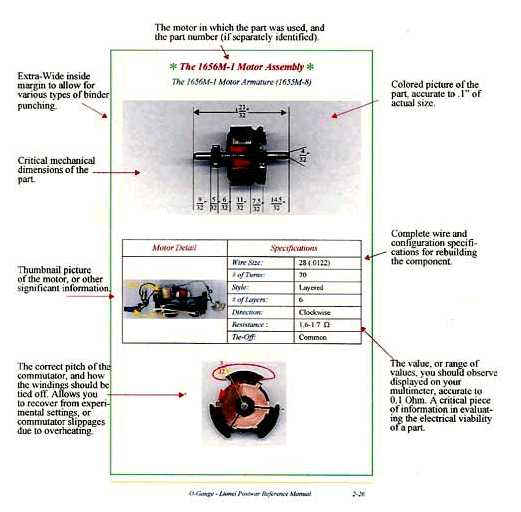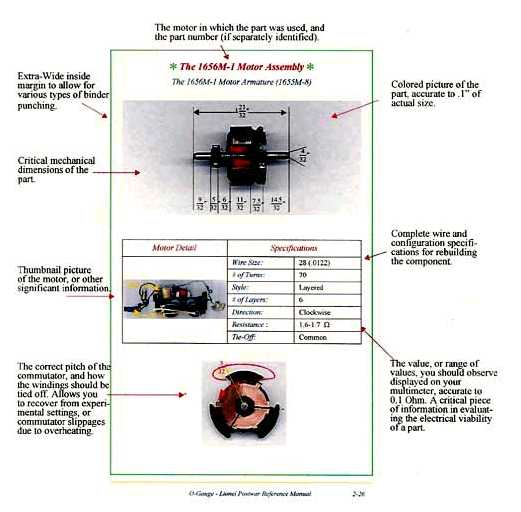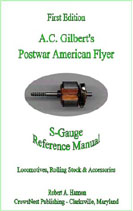About Us
This site is dedicated to providing reference manuals and services focused on the maintenance and repair of electrical components found in model trains. Electrical components are the things that make a train “A Train”, and not just a mantle piece or doorstop. You may have heard words like “armature”, “field”, “coil”, “motor” or “solenoid”. That’s what we’re talking about here. The period chosen for the launch of this website spans from the early 1900’s through what has come to be called the “postwar” period (1945-1969). Many of these components have been around for 80 to 90 years, while others were more “recently” manufactured in the late 1940s, 1950s, and 1960s. What they all have in common is that replacement electrical components are no longer available from the manufacturer(s), with many already well-beyond the end of their expected operational life and showing it. So, for those who like to do it themselves (or want to learn), we will be offering a series of manuals with all the specifications required to troubleshoot and fix electrical problems. For those who don’t, we offer reasonably priced services guaranteed to bring your trains back to life. Currently, this site is in its infancy. Eventually, it will expand to encompass many different U.S. manufacturers, their manufacturing periods, and the gauges they marketed. For now, we have targeted Lionel, Ives, and American Flyer and their applicable pre- and post-war production. The major gauges for which they were known include S-Gauge, 0-Gauge, Standard Gauge, 00-Gauge, and HO. Once these are completed, other manufacturers will follow. The following paragraphs describe the manuals and services which are available now, and which will be available in the near future. You are invited to check back periodically to see how far this web-site has developed, and to see if it has anything in your area or period of interest!
Reference Manuals
Unique reference manuals, focused on the electrical components of these animated pieces of American History (with a little help from some very talented Italian and German immigrants and a host of other electromechanically capable nationalities), will be announced and made available here. Whether you do your own repairs, or have someone else do them, these manuals will take your troubleshooting skills to a whole new level, and potentially save you a bundle (in time, money and frustration). Available Now! This manual contains the specs on every armature, field, bobbin and coil (except transformers) manufactured by A.C. Gilbert from 1945 through 1964. It also contains some basic, easy to follow procedures required to evaluate any armature, field, or bobbin. Also, check out the Updates section to see how we handle omissions and variations that may crop up after any manual is published. Available Now! J.L.Cowen’s Postwar Lionel Trains O-Gauge Reference Manual I. This manual is the first of two planned volumes, and focuses on Steamers, Diesels, Electrics (motors and their armatures and fields) and their ancillary electrical devices (reverse units, horns, relays, electrically operated couplers, etc.). Available Now! J.L. Cowen’s Postwar Lionel Trains O-Gauge Reference Manual II. This manual will focus on Motorized Cars, Rolling Stock and Accessories (including Tenders and their whistles), and will complete the reference material for the Lionel immediate-Postwar period. Bookmark this site and check back every couple of weeks or so as we are constantly updating our site.


Diagnostic & Repair Manuals
These manuals are currently in the design, planning and research stages. They will contain detailed diagnostic and repair information (both theory and actual procedures) dealing with wiring, bearings, bushings, gears, disassembly, reassembly, drilling, tapping, etc. All geared to proving that most of those locomotives which supposedly “can’t be fixed”, not only can be fixed, but once fixed, will run every bit as well as the day they left the factory. Coming Soon! J.L. Cowen’s Postwar Lionel Train O-Gauge Repair Manual I. A repair manual dealing exclusively with small motorized units. This manual will include both mechanical and electrical troubleshooting information, wiring diagrams, and extensive parts lists which will track the evolution of these unit through end of production. Support
Support
E-Mail support will be available to all registered purchasers of the manuals. Over 3700 free requests for information have been filled since this site opened in June 2001, ranging from: where to go to get wire and what kind of wire to purchase, to what kind of alternative multimeter to purchase, to requests for info on sources of parts in the U.S.


Web-Based Updates
If you turn up a component which was omitted from any purchased reference manual, you will get a free manual, provided you send the component in for characterization (breakdown, rewinding, and retesting). We will pay the return postage. But … first come, first served. Be sure to send an e-mail to trainref@trainrefs.com beforehand, to make sure you are the first to report having the part. The data gleaned from your part will be posted to the website and you will be given credit on the Updates page for your contribution. All other registered purchasers of the manual will be able to download and print the update(s) on their local printer. Check back periodically, or wait for an E-Mail announcing availability of a new update.
Services
If you can’t, or don’t have the time to, do it yourself, a broad line of reasonably-priced rewinding, repair, and preventive maintenance services are available. Generally, you will find the prices associated with these services under the listed manual. If they haven’t been posted yet, feel free to contact us by e-mail and describe what you have and the problem you’re having with it. We’ll be glad to provide an initial assessment of the problem over the web. The message here is: “Don’t give up on it until you’ve contacted us!”

Note 1:
The Updates section of the website is currently accessible to all. Starting in Dec 2003, only registered purchasers of these manuals will have access to selected entries on the Updates pages.
Note 2:
The files in the Updates section(s) are optimized for printing only. The pictures may appear muddy on your terminal display. The page margins are set up for double-sided printing. They have been tested on both HP OfficeJetPro 1150C and HP-G85 printers with fine results.
Note 3:
Be sure to notify us if your E-Mail address has changed.
